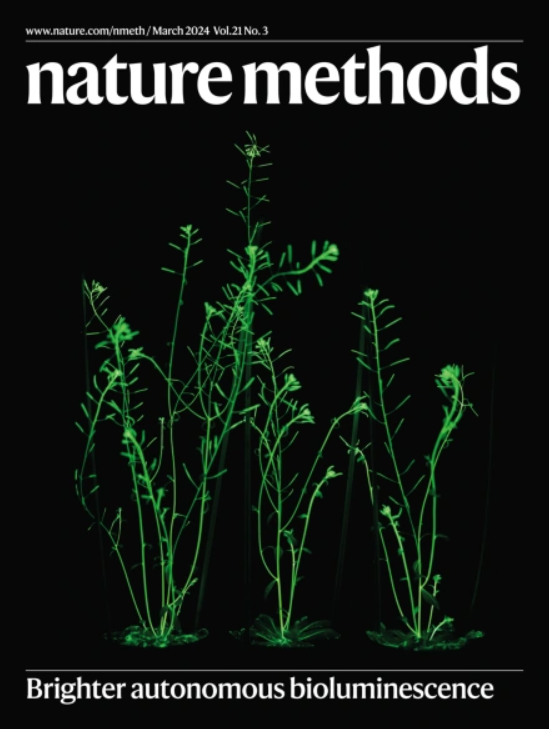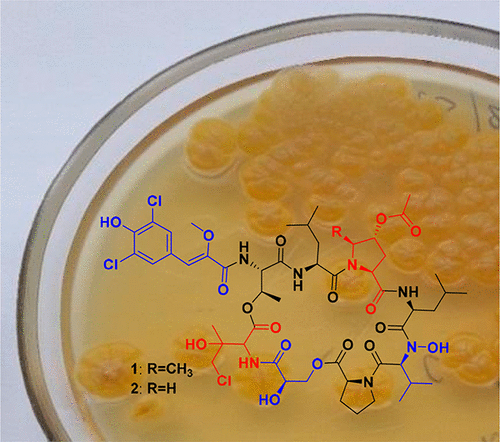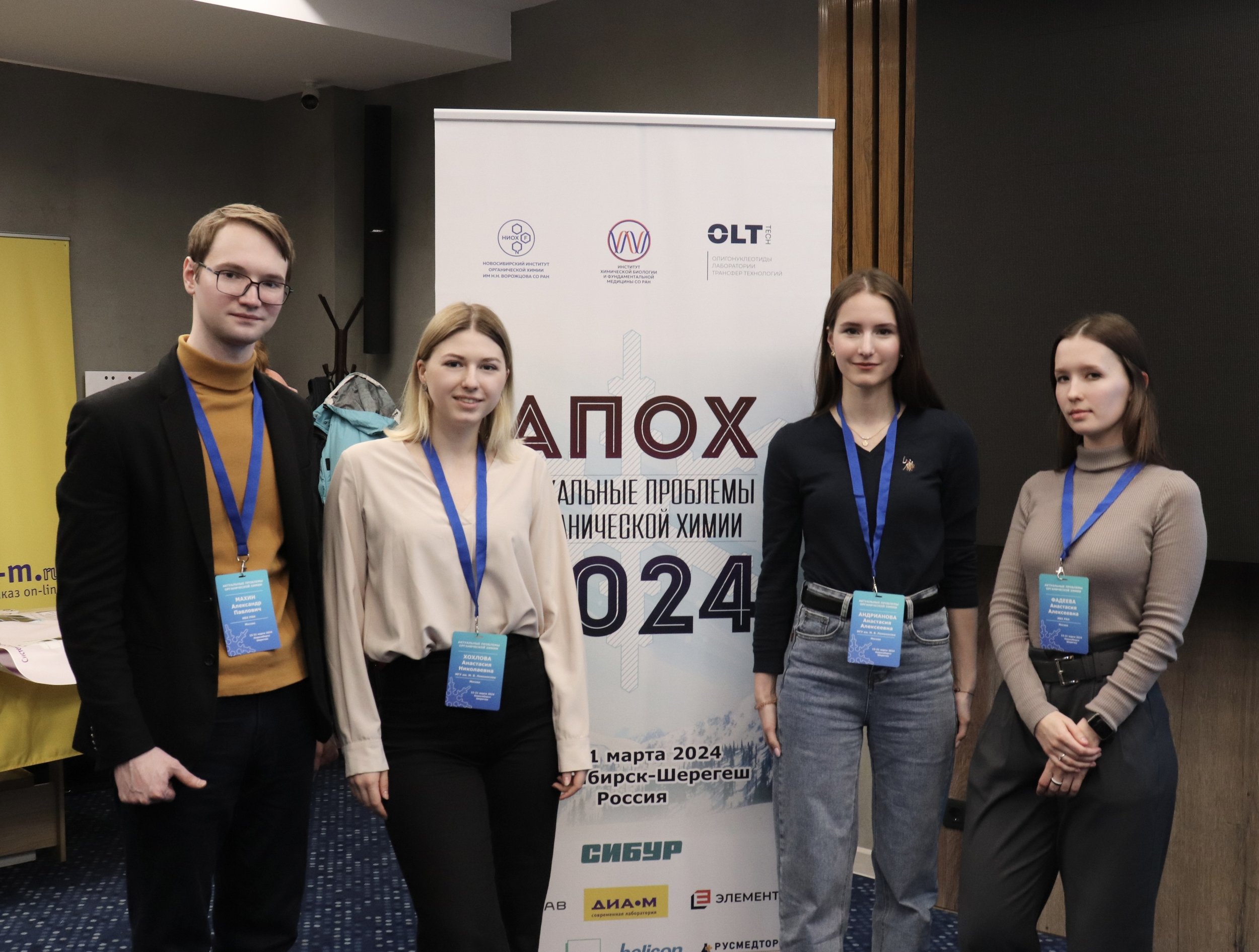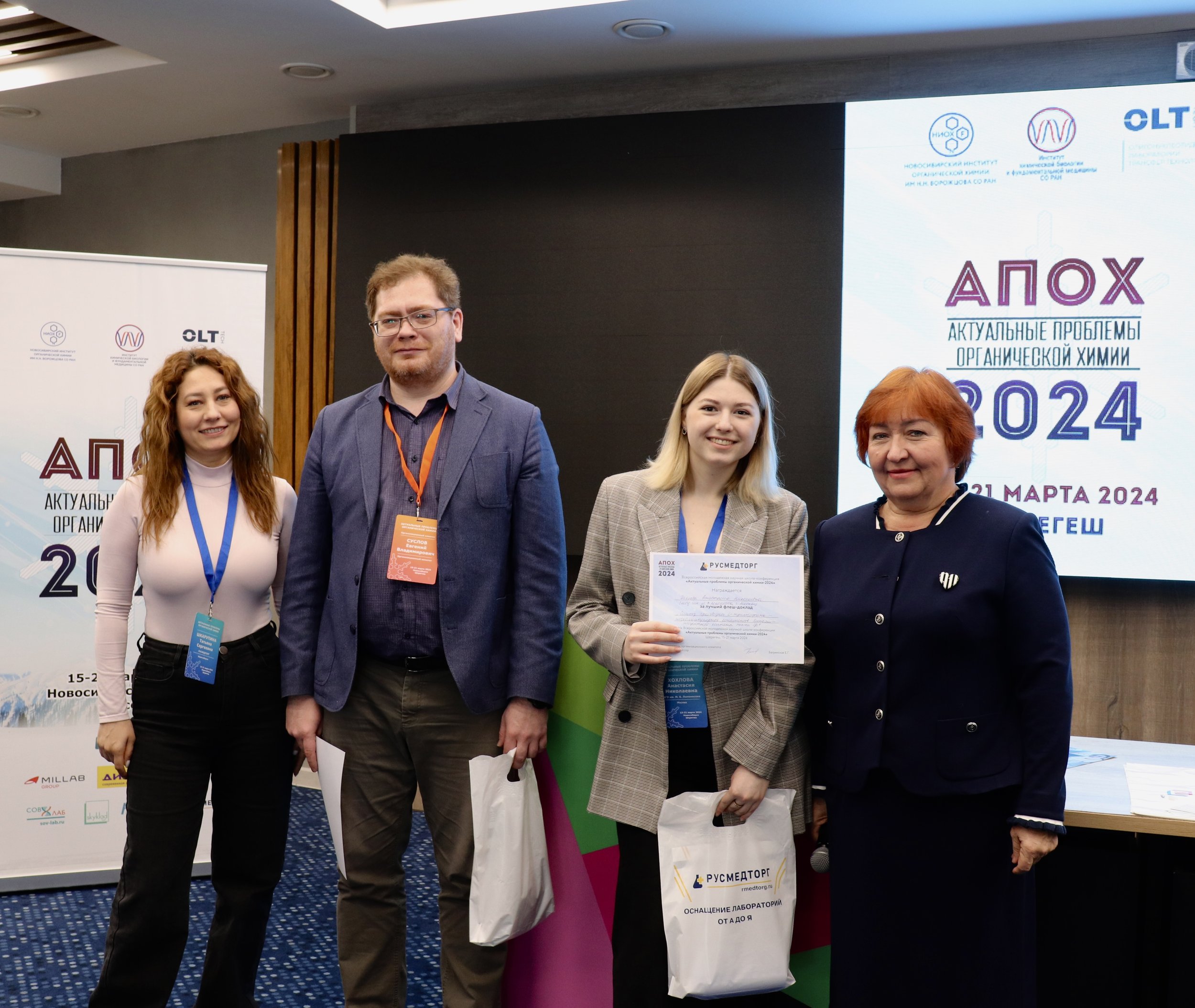Our students Anastasia Andrianova, Anastasia Khokhlova, Anastasia Fadeeva & Aleksandr Makhin visited the Scientific School-Conference "Current Topics in Organic Chemistry", which took place in Sheregesh, Kemerovo Region during March 15th - 21st, 2024. Issues pertaining to structure and reactivity of organic compounds, molecular design and synthesis, biochemistry, polymers and organic materials were discussed. We were pleased to introduce our flash presentations on recent advances in Henlea earthworm bioluminescence, fungal bioluminescence and SARS-CoV-2 inhibitors development. Congratulations to Anastasia Khokhlova for the best flash presentation!
New Papers Winter 2024 - recent progress in bioluminescence studies
Four new articles on bioluminescent topics have been published since the beginning of 2024: a review about the study of bioluminescence of fungi in a prestigious Journal of Photochemistry and Photobiology C: Photochemistry Reviews, two milestone articles about the use of fungal autonomic bioluminescence system, including in eukaryotic organisms, in Nature Methods and Science Advances and a fresh update about the study of bioluminescence mechanism of Henlea earthworm in BBRC.
Further insights into the chemistry of Henlea sp. bioluminescence
The bioluminescence of Henlea sp. earthworms is enhanced by low-molecular weight cofactors termed ActH and ActS. The compounds were purified from earthworm extracts and investigated by NMR and HRMS. ActH was identified as cofactor F0, ActS turned out as sulfated ActH. The project is performed in colllaboration with Institute of Biophysics, Krasnoyarsk Research Center, Pirogov Russian National Research Medical University and Moscow Institute of Physics and Technology. Further details could be found on Org Biomol Chem website.
New depsipeptide antibiotics from marine Streptomyces sp. KMM 9044
Picture from https://pubs.acs.org/doi/10.1021/acs.orglett.2c01714
Two new unusual depsiheptapeptides streptocinnamides were isolated from the bacterium Streptomyces sp. KMM 9044 collected in the northwestern part of the Sea of Japan. The structures of isolated compounds were identified by NMR and MS studies and confirmed by chemical transformations. One of the isolated compounds, streptocinnamide A is a potential selective inhibitor of a series of Gram-positive bacteria. The project was performed in collaboration with G. B. Elyakov Pacific Institute of Bioorganic Chemistry, Pirogov Russian National Research Medical University, Moscow Institute of Physics and Technology and Federal Research and Clinical Centre of Physical-Chemical Medicine of Federal Medical Biological Agency. Further information could be found on OrgLett website.
21st International Symposium on Bioluminescence and Chemiluminescence
Alexey Kotlobay, Aleksandra Tsarkova, Zinaida Osipova, Karen Sarkisyan & Ilia Yampolsky visited 21st International Symposium on Bioluminescence and Chemiluminescence hosted along with XIX International Symposium on Luminescence Spectrometry by University of Oviedo, which took place in Gijon, Spain during May 31st- June 3rd, 2022. Many presentations about recent advances in chemiluminescence and bioluminescence, fruitful interactions and discussions - we were happy to meet our friends and colleagues from around the world!
Mechanism of coelenterazine chromophore photoinactivation from Beroe abissycola photoprotein is proposed
New paper in Organic Letters made in collaboration with Photobiology Lab from Institute of Biophysics SB RAS (Krasnoyarsk, Russia) describes the elucidation of the mechanism of Beroe abyssicola photoprotein photoinactivation. See here.
Congratulations to Nadezhda Myshkina (Markina)!
Congratulations to Nadezhda Myshkina (Markina) with successful PhD thesis defence. We wish you many fruitful years in science! Full video is available here (russian only).
Sustainable Light Achieved in Living Plants
We are happy to announce that new paper about autoluminescent plants was published this week in Nature Biotechnology as a result of collaboration between Yampolsky lab and Institute of Bioorganic Chemistry RAS, Planta, MRC London Institute of Medical Sciences, and the Institute of Science and Technology Austria.
The research of fungal bioluminescent system revealed that its bioluminescence is metabolically similar to the natural processes common among plants. By inserting DNA obtained from the mushroom, we were able to create plants that glow much brighter than previously possible.
This biological light can be used by scientists for observing the inner workings of plants or for practical and aesthetic purposes, most notably for creating glowing flowers and other ornamental plants. Please refer to the original paper to learn more.
The work was highlighted in Nature Plants, Nature Methods, CNN, Guardian, The Times, Science etc.
Results of Young Scientists' Award 2019 of Moscow Government are announced
Congratulations to our colleagues from Organic Synthesis Group Aleksandra Tsarkova and Zinaida Osipova - together with Mikhail Baranov they received a prize in Biology!
We also want to congratulate our colleagues from other laboratories of the Institute of Bioorganic Chemistry:
Dmitry Bilan and Yulia Ermakova - Biotechnology
Marat Pavlyukov and Victoria Shender - Medical Sciences
More information here (russian only).
Ilia Yampolsky as invited lecturer at Yale University School of Medicine
Congratulations to Ilia Yampolsky for his first invited lecture at Yale University, School of Medicine on the 16th January 2020.

















